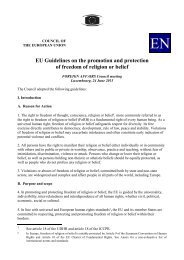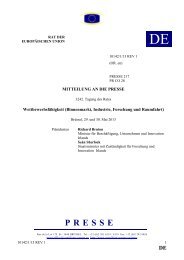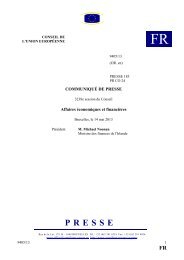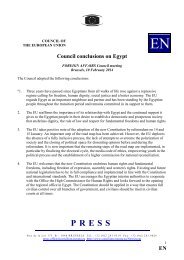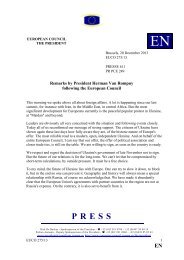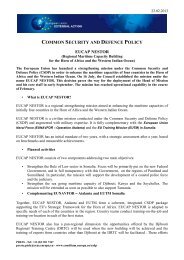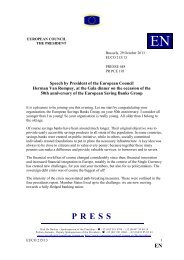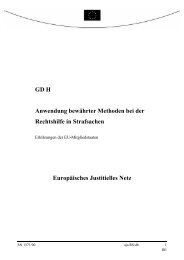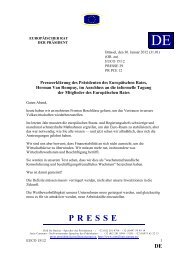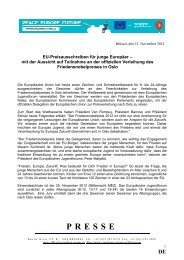14508/09 ADD 1 PL/vk 1 DG G COUNCIL OF THE ... - Europa
14508/09 ADD 1 PL/vk 1 DG G COUNCIL OF THE ... - Europa
14508/09 ADD 1 PL/vk 1 DG G COUNCIL OF THE ... - Europa
You also want an ePaper? Increase the reach of your titles
YUMPU automatically turns print PDFs into web optimized ePapers that Google loves.
VI. CONCLUSIONS<br />
6.1. Development within the Member States<br />
All the Member States have a policy for gender equality and are committed to implementing the<br />
Beijing Platform for Action. However, the situation of women also differs depending on the social<br />
and economic situation of the Member States. As we have shown in this report, the Member States<br />
may focus on different policy areas, but the overall impression is that all countries are making<br />
active efforts to implement gender equality within the framework of the PfA.<br />
Despite certain differences of emphasis between countries in their policies to improve the situation<br />
of women, it is quite obvious that all the Member States are united in seeking to implement gender<br />
equality by affirming women’s right to work and to earn their own income. In this area, EU<br />
cooperation has been a source of inspiration and ideas for the Member States, and measurable<br />
targets have also been set.<br />
Another shared area of focus is the problem of violence against women, including domestic<br />
violence. This is a policy area in which the Member States have taken new initiatives and developed<br />
their legislation in recent years, and they are benefiting from cooperation and the exchange of<br />
experience, particularly concerning trafficking in women for prostitution. The problem is so<br />
prevalent and – where trafficking in women is concerned – transcends national borders to such an<br />
extent that the Member States have recognised the need to work together.<br />
All Member States have tried in one way or another to increase the proportion of women decision-<br />
makers – particularly in political life – and all the Member States have also put in place national<br />
mechanisms for implementing gender equality.<br />
An increasing number of Member States now have both a Minister who is responsible for gender<br />
equality issues, and gender equality bodies, units or departments placed high in the structure of<br />
government. The responsibility, status and mandate of these gender equality bodies in relation to<br />
different policy areas vary to a large extent between the Member States and there is still a need to<br />
improve the status of these bodies in order to bring gender equality to the forefront.<br />
<strong>14508</strong>/<strong>09</strong> <strong>ADD</strong> 1 <strong>PL</strong>/<strong>vk</strong> 144<br />
ANNEX <strong>DG</strong> G EN



